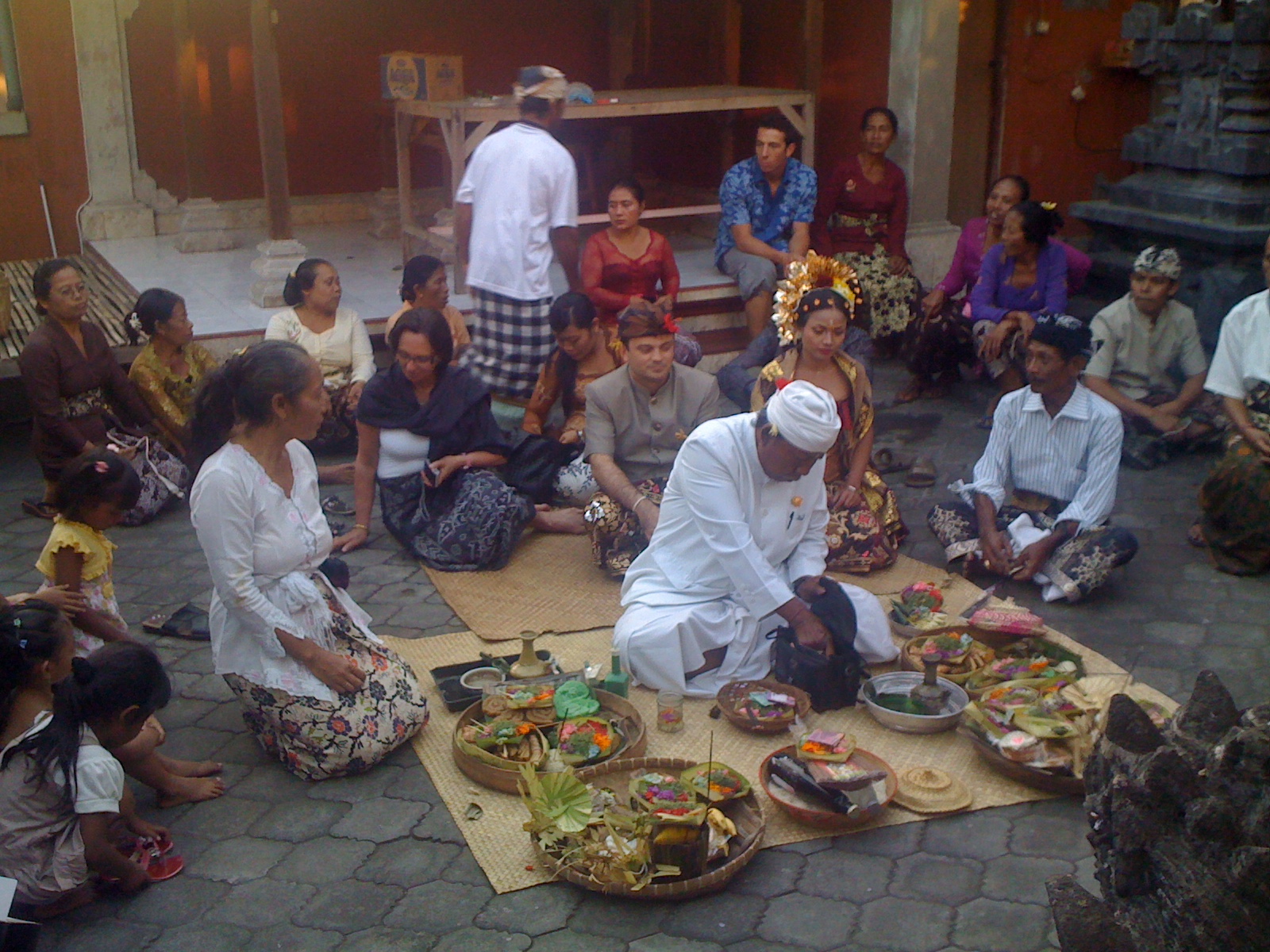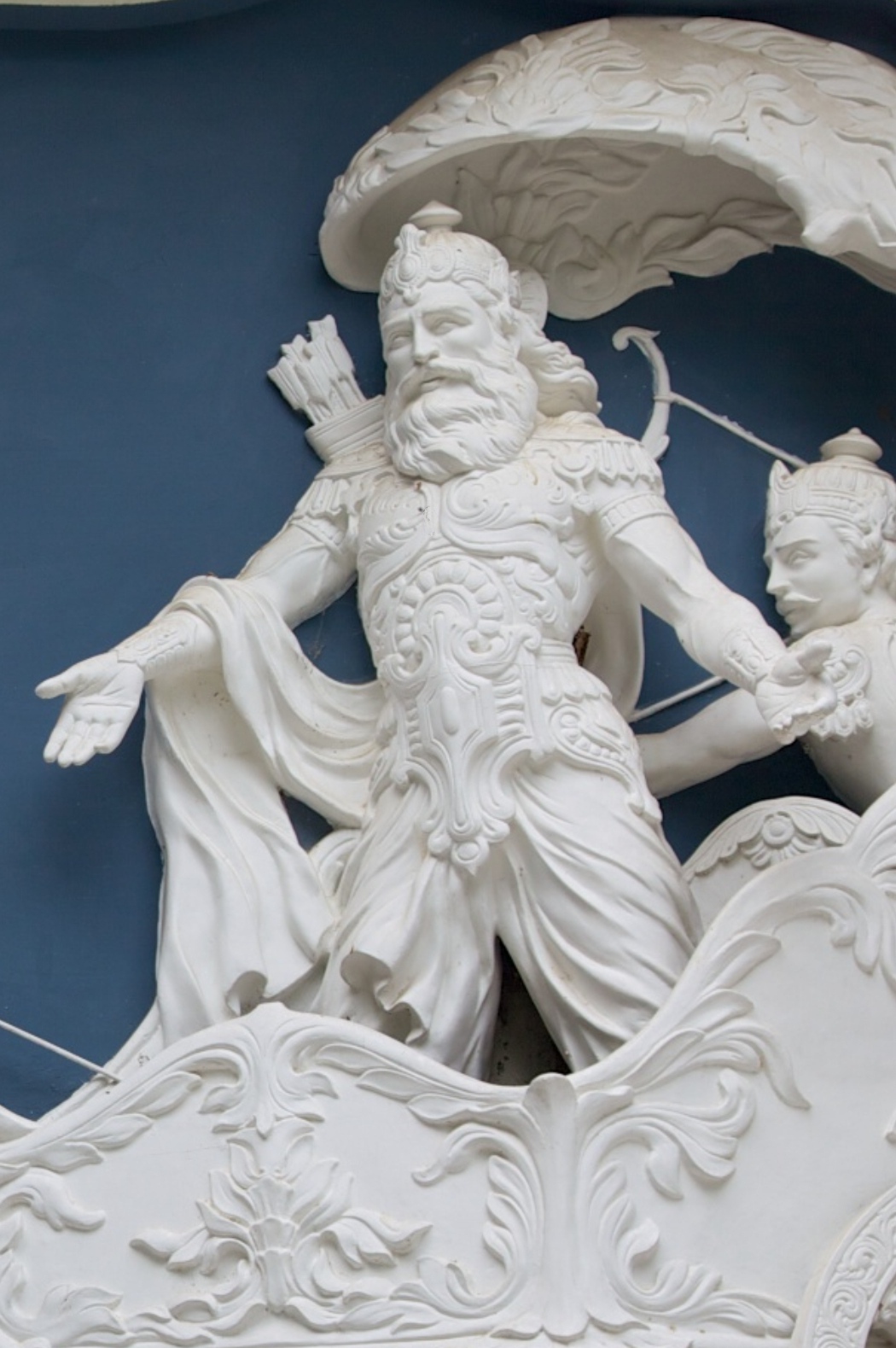|
Brahmin
Brahmin (; ) is a ''Varna (Hinduism), varna'' (theoretical social classes) within Hindu society. The other three varnas are the ''Kshatriya'' (rulers and warriors), ''Vaishya'' (traders, merchants, and farmers), and ''Shudra'' (labourers). The traditional occupation of Brahmins is that of priesthood (purohit, pandit, or pujari) at Hindu temples or at socio-religious ceremonies, and the performing of rite of passage rituals, such as solemnising a wedding with hymns and prayers.James Lochtefeld (2002), Brahmin, The Illustrated Encyclopedia of Hinduism, Vol. 1: A–M, Rosen Publishing, , page 125 Traditionally, Brahmins are accorded the supreme ritual status of the four social classes, and they also served as spiritual teachers (guru or acharya). In practice, Indian texts suggest that some Brahmins historically also became agriculturalists, warriors, traders, and had also held other occupations in the Indian subcontinent.GS Ghurye (1969), Caste and Race in India, Popular Prakasha ... [...More Info...] [...Related Items...] OR: [Wikipedia] [Google] [Baidu] |
Purohit
Purohita (), in the Hindu context, means ''chaplain'' or ''family priest'' within the Vedic priesthood. In Thailand and Cambodia, it refers to the royal chaplains. A ''tīrthapurohit'' is a priest/ritual performer (''purohit'') at a sacred site (''tīrtha''). Etymology The word ''purohita'' derives from the Sanskrit, ''puras'' meaning "front", and ''hita'', "placed". The word is also used synonymously with the word ''pandit'', which also means "priest". '' Tirtha purohita'' means the ''purohita'' who sit at the fords of the holy rivers or holy tanks and who have maintained the records of the forefathers of the Hindu family for thousands of years. ''Purohita'' can refer to a house priest. Another less-formal name for teerth purohits is ''panda'', which is derived from the word ''pandit'' (from the Sanskrit ''paṇḍita'', meaning "learned man"). Education In India, literate men from the Brahmin varna who desire to become ''purohitas'' receive special training both in theor ... [...More Info...] [...Related Items...] OR: [Wikipedia] [Google] [Baidu] |
Prambanan
Prambanan (, , Javanese script, Hanacaraka: ꦫꦫꦗꦺꦴꦁꦒꦿꦁ) is a 9th-century Hindu temple, Hindu Candi of Indonesia, temple compound in the Special Region of Yogyakarta, in southern Java, Indonesia, dedicated to the Trimurti, Trimūrti, the expression of God as the Creator (Brahma), the Preserver (Vishnu) and the Destroyer (Shiva). The temple compound is located approximately northeast of the city of Yogyakarta on the boundary between Central Java and Special Region of Yogyakarta, Yogyakarta provinces. The temple compound, a UNESCO World Heritage Site, is the largest Hindu temple site in Indonesia and the List of largest Hindu temples, second-largest in Southeast Asia after Angkor Wat. It is characterized by its tall and pointed architecture, typical of Hindu architecture, and by the towering central building inside a large complex of individual temples. Prambanan temple compounds originally consisted of 240 temple structures, which represented the grandeur of ancie ... [...More Info...] [...Related Items...] OR: [Wikipedia] [Google] [Baidu] |
Kshatriya
Kshatriya () (from Sanskrit ''kṣatra'', "rule, authority"; also called Rajanya) is one of the four varnas (social orders) of Hindu society and is associated with the warrior aristocracy. The Sanskrit term ''kṣatriyaḥ'' is used in the context of later Vedic society wherein members were organised into four classes: ''brahmin'', kshatriya, '' vaishya,'' and '' shudra''. History Early Rigvedic tribal monarchy The administrative machinery in Vedic India was headed by a tribal king called a Rajan whose position may or may not have been hereditary. The king may have been elected in a tribal assembly (called a Samiti), which included women. The Rajan protected the tribe and cattle; was assisted by a priest; and did not maintain a standing army, though in the later period the rulership appears to have risen as a social class. The concept of the fourfold varna system is not yet recorded. Later Vedic period The hymn '' Purusha Sukta'' in the ''Rigveda'' describes the symbolic crea ... [...More Info...] [...Related Items...] OR: [Wikipedia] [Google] [Baidu] |
Shudra
Shudra or ''Shoodra'' (Sanskrit: ') is one of the four varnas of the Hindu class and social system in ancient India. Some sources translate it into English as a caste, or as a social class. Theoretically, Shudras constituted a class like workers. According to Richard Gombrich's study of Buddhist texts, particularly relating to castes in Sri Lankan Buddhist and Tamil Hindu society, The word ''Shudra'' appears in the ''Rigveda'' and it is found in other Hindu texts such as the ''Manusmriti'', ''Arthashastra'', dharmaśāstras and jyotiḥśāstras. In some cases, Shudras participated in the coronation of kings, or were amatya "ministers" and rajas "kings" according to early Indian texts. History Vedas The term ''śūdra'' appears only once in the ''Rigveda''. This mention is found in the mythical story of creation embodied in the '' Puruṣasuktam''. It describes the formation of the four varnas from the body of a primeval man. It states that the brahmin emerged from hi ... [...More Info...] [...Related Items...] OR: [Wikipedia] [Google] [Baidu] |
1st Brahmans
The 1st Brahmans was an infantry regiment of the British Indian Army. It was raised at Oudh by Captain T Naylor in 1776 for service in the army of Nawab Wazir of Oudh, and was known as the Nawab Wazir's Regiment. It was transferred to the East India Company in 1777. In 1922, it was designated as the 4th Battalion 1st Punjab Regiment. The regiment was disbanded in 1931. Designations Over the years the regiment was known by a number of different designations: *1776 Nawab Wazir's Brahaman Regiment *1777 30th Battalion of Bengal Sepoys *1781 23rd Regiment of Bengal Sepoys *1784 29th Regiment of Bengal Sepoys *1786 29th Bengal Sepoy Battalion *1796 2nd Battalion 9th Regiment of Bengal Native Infantry *1824 21st Regiment of Bengal Native Infantry *1861 1st Regiment of Bengal Native Infantry *1885 1st Regiment of Bengal Infantry *1901 1st Brahman Infantry *1903 1st Brahmans *1917 2nd Battalion raised *1922 4th Battalion, 1st Punjab Regiment History East India Company service While in ... [...More Info...] [...Related Items...] OR: [Wikipedia] [Google] [Baidu] |
Chanakya
Chanakya (ISO 15919, ISO: ', चाणक्य, ), according to legendary narratives preserved in various traditions dating from the 4th to 11th century CE, was a Brahmin who assisted the first Mauryan emperor Chandragupta Maurya, Chandragupta in his rise to power and the establishment of the Maurya Empire. According to these narratives, Chanakya served as the chief adviser and prime minister to both emperors Chandragupta Maurya and his son Bindusara. Conventionally, Chanakya was identified with Kauṭilya and synonymously Vishnugupta, the author of the ancient Indian politico-economic treatise ''Arthashastra''. ''Arthashastra'' is now thought with high probability to have been composed by multiple authors during the early centuries of the common era—several centuries after the Mauryan period—the backdated identification with Chanakya to have served to add prestige to the work. Chanakya-Chandragupta ''katha'' (legend) There is no documented historical informati ... [...More Info...] [...Related Items...] OR: [Wikipedia] [Google] [Baidu] |
Aryabhatta
Aryabhata ( ISO: ) or Aryabhata I (476–550 CE) was the first of the major mathematician-astronomers from the classical age of Indian mathematics and Indian astronomy. His works include the ''Āryabhaṭīya'' (which mentions that in 3600 '' Kali Yuga'', 499 CE, he was 23 years old) and the ''Arya- siddhanta''. For his explicit mention of the relativity of motion, he also qualifies as a major early physicist. Biography Name While there is a tendency to misspell his name as "Aryabhatta" by analogy with other names having the " bhatta" suffix, his name is properly spelled Aryabhata: every astronomical text spells his name thus, including Brahmagupta's references to him "in more than a hundred places by name". Furthermore, in most instances "Aryabhatta" would not fit the metre either. Time and place of birth Aryabhata mentions in the ''Aryabhatiya'' that he was 23 years old 3,600 years into the '' Kali Yuga'', but this is not to mean that the text was composed at that tim ... [...More Info...] [...Related Items...] OR: [Wikipedia] [Google] [Baidu] |
Kannauj
Kannauj (Hindustani language, Hindustani pronunciation: ) is an ancient city, administrative headquarters and a municipal board or Nagar palika, Nagar Palika Parishad in Kannauj district in the Indian States and territories of India, state of Uttar Pradesh. It is located 113 km (71 mi) from Etawah, 93 km (58 mi) from Kanpur, 129 km (81 mi) from Lucknow. The city's name is an evolved form of the classical name ''Kanyakubja''. During the ancient Vedic period, it was the capital city of the Pañcāla, Panchala Kingdom during the reign of king Vajrayudha. In the medieval era, it formed the core of the Kingdom of Kannauj and was ruled by multiple successive royal families. It was also known as ''Mahodaya'' during the time of Mihira Bhoja. It is situated 104 kilometres west of the state capital, Lucknow. Kannauj is famous for distilling of scents and perfumes. It is known as "India's perfume capital" and is famous for its traditional Kannauj Perfume, a g ... [...More Info...] [...Related Items...] OR: [Wikipedia] [Google] [Baidu] |
Thai - Vessantara Jataka, Chapter 5 - The Brahmin Jujaka With His Wife Amittapana - Walters 35239
Thai or THAI may refer to: * Of or from Thailand, a country in Southeast Asia. ** Thai people, Siamese people, Central/Southern Thai people or Thai noi people, an ethnic group from Central and Southern Thailand. ** , Thai minority in southern Myanmar. ** , Bamar with Thai ancestry in Central Myanmar. ** Sukhothai language, a kind of Thai topolect, by the end of the 18th century, they gradually diverged into regional variants, which subsequently developed into the modern Central Thai and Southern Thai. *** Central Thai language or Siamese language, the sole official language in Thailand and first language of most people in Central Thailand, including Thai Chinese in Southern Thailand. *** Southern Thai language, or Southern Siamese language, or Tambralinga language, language of Southern Thailand first language of most people in Southern Thailand *** Thai script *** Thai (Unicode block) People with the name * Thai (surname), a Vietnamese version of Cai, including a list of ... [...More Info...] [...Related Items...] OR: [Wikipedia] [Google] [Baidu] |
Brahman
In Hinduism, ''Brahman'' (; IAST: ''Brahman'') connotes the highest universal principle, the ultimate reality of the universe.P. T. Raju (2006), ''Idealistic Thought of India'', Routledge, , page 426 and Conclusion chapter part XII In the Vedic Upanishads, ''Brahman'' constitutes the fundamental reality that transcends the duality of existence and non-existence. It serves as the absolute ground from which time, space, and natural law emerge. It represents an unchanging, eternal principle that exists beyond all boundaries and constraints. Because it transcends all limitation, ''Brahman'' ultimately defies complete description or categorization through language. In major schools of Hindu philosophy, it is the non-physical, efficient, formal and final cause of all that exists.For dualism school of Hinduism, see: Francis X. Clooney (2010), ''Hindu God, Christian God: How Reason Helps Break Down the Boundaries between Religions'', Oxford University Press, , pages 51–58, 11 ... [...More Info...] [...Related Items...] OR: [Wikipedia] [Google] [Baidu] |
The Goddess Worshiped By Rishi Chyavana
''The'' is a grammatical article in English, denoting nouns that are already or about to be mentioned, under discussion, implied or otherwise presumed familiar to listeners, readers, or speakers. It is the definite article in English. ''The'' is the most frequently used word in the English language; studies and analyses of texts have found it to account for seven percent of all printed English-language words. It is derived from gendered articles in Old English which combined in Middle English and now has a single form used with nouns of any gender. The word can be used with both singular and plural nouns, and with a noun that starts with any letter. This is different from many other languages, which have different forms of the definite article for different genders or numbers. Pronunciation In most dialects, "the" is pronounced as (with the voiced dental fricative followed by a schwa) when followed by a consonant sound, and as (homophone of the archaic pronoun ''thee' ... [...More Info...] [...Related Items...] OR: [Wikipedia] [Google] [Baidu] |





